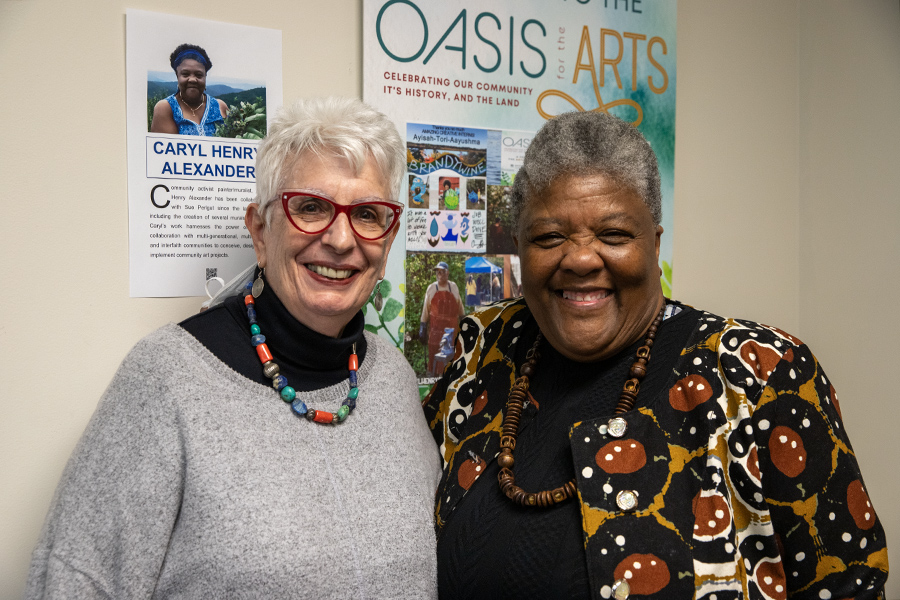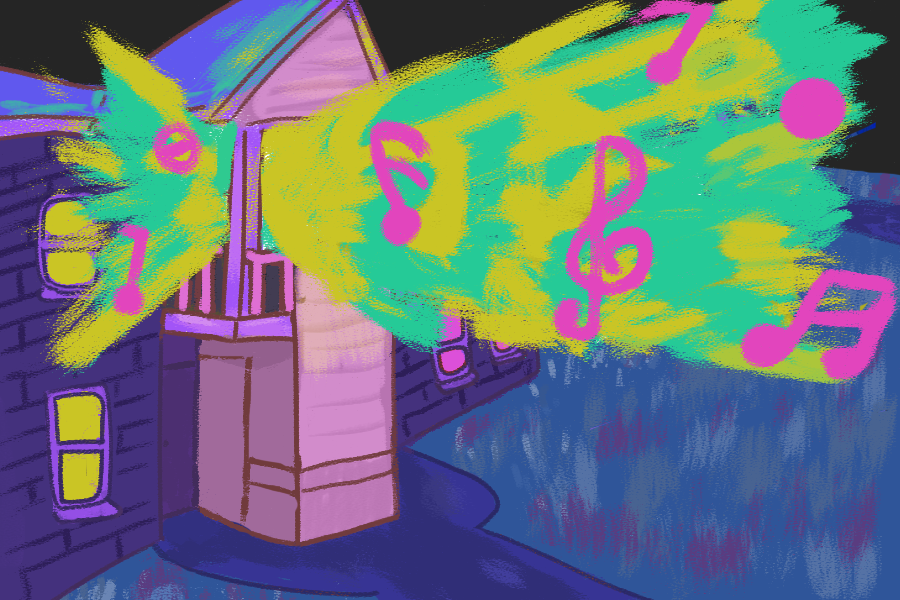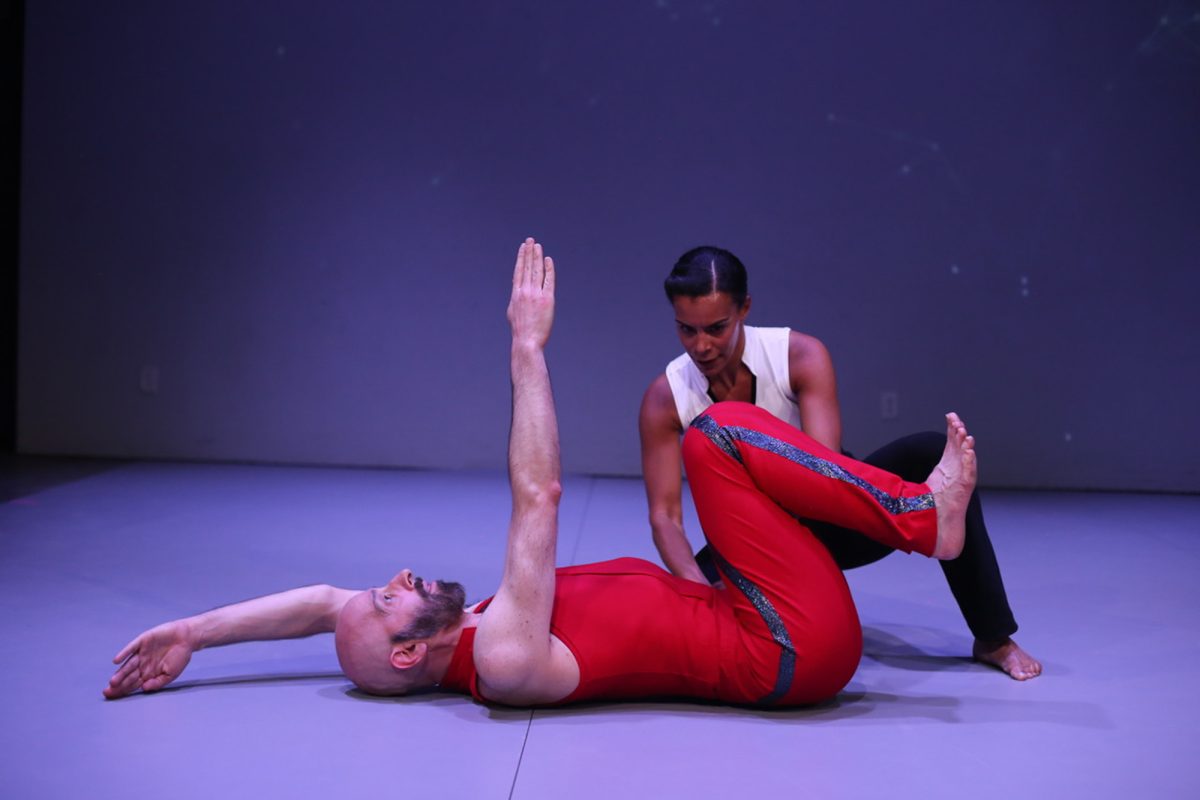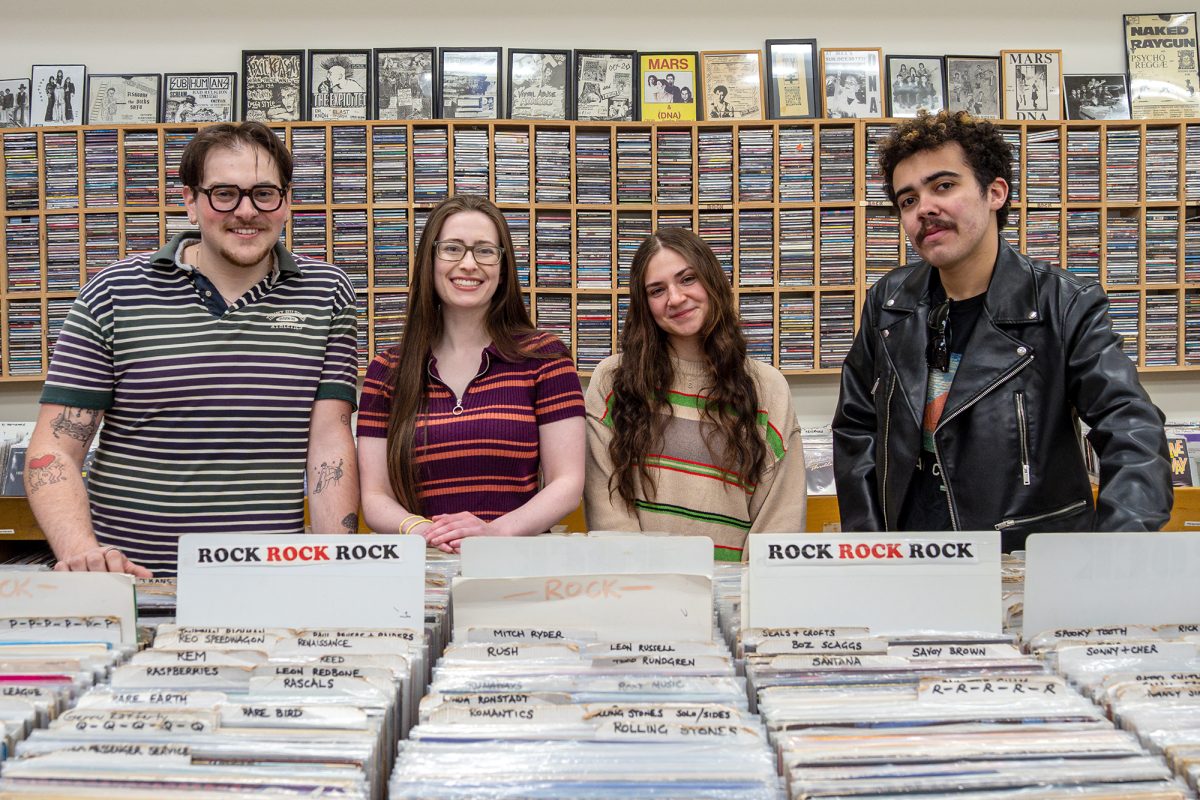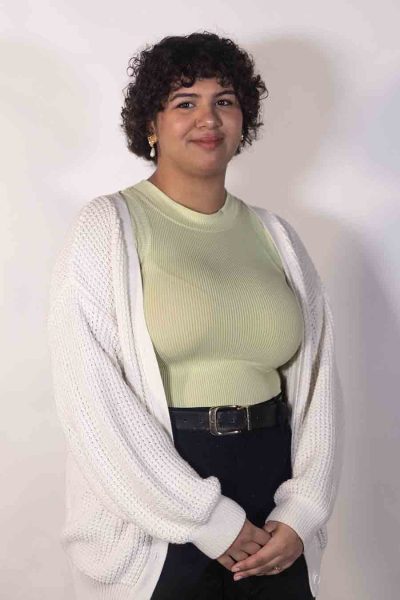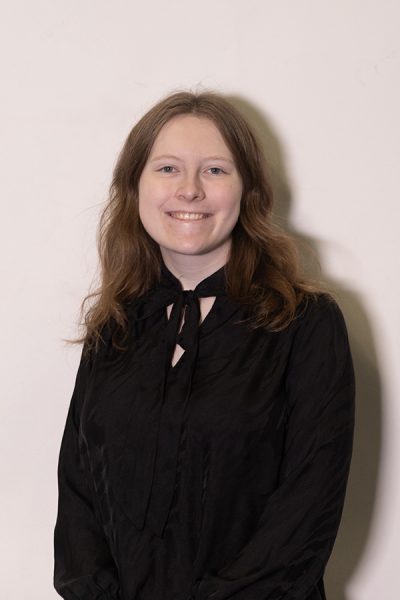On the first Friday of every month, Ithaca locals and visitors are invited to take a stroll downtown to experience in-person shows and displays highlighting the local creative art scene, depicting a colorful assortment of artistic talent. One exhibit, however, is personally examining the relationship between art and activism.
The Stand Up Women! Older Women & Social Activism in Tompkins County exhibition takes the work of a few older local women who have worked within various forms of social activism, like reproduction rights, feminism, mental health and LGBTQ+ rights, and channels it through the creation of visual arts. Viewers were invited to observe drawings, text-based images, photos and personal narratives that were hung up by coat hangers — a significant piece of the women’s rights movement — around the room. The exhibition opened on First Friday Gallery Night on Nov. 3 at Lifelong, a community center for those 50 and older at 119 W Court St, where the work will remain on display. The exhibit is free and open to the public until mid-January 2024.
The exhibition is a collaborative project between Caryl Henry-Alexander, artist and activist, and filmmaker and organizer of the Reproductive Justice Film Festival, Sue Perlgut, who mentored Henry-Alexander when she was in school. In preparation for the exhibit, Henry-Alexander led the women in a series of workshops to help take their activism and experiences and represent them in artistic pieces including drawings, poetry and photography.
“It was amazing because advocacy and activism … comes from something that’s touched your life, and each one of them had an experience with what they’re advocates for,” Henry-Alexander said. “Our workshops were very much telling each other our stories and then helping each other get it from the brain into the paper. … So it was educational. … You have to open yourself to be creative and when you open yourself up, you’re just so beautiful. So I just enjoy each of them as beautiful, creative spirits.”
In addition to the visual art, Perlgut conducted a series of interviews with the women, exploring their art and activism, which will be available for viewers to watch until the gallery closes.
“I knew them all, so it was great,” Perlgut said. “And everybody was lovely to each other and it was a fantastic experience, and this is a fantastic experience having the art and having so many people come see it.”
Jennifer Jolly, Dana professor in the Department of Art, Art History, and Architecture at Ithaca College, works closely with art and activism, specifically within Mexican politics. Jolly said art is deeply interwoven with activism because it helps facilitate deeper conversations and connections between individuals.
“It really revolves around this idea that artists do have really special skills that are both about the imagination, that are about creativity,” Jolly said. “The idea that an artist is somebody who creates something to create something new. One of the things that they began saying in the early 20th century, for example, is that artists can create society and that artists can rebuild society and sort of lead us forward in new directions. And so I think those ideas are the ones that create space where art and activism continues today would be something valuable.”
Jolly currently teaches a seminar that discusses themes of art and activism, analyzing gender, politics, race and abolition. Part of the power of art and activism, Jolly said, is its ability to bring people from different communities and experiences together — which was part of the intentionality of the exhibit.
“This brings a group of women together,” Jolly said. “A group of women who are having conversations about activist issues that they care about, thinking about how those ideas translate into different forums and different media. … But what matters is this idea that art has brought these women together. And that this idea of bringing art and activism together generates conversations, generates a reason to gather, generates community.”
Psychotherapist Yvonne Fisher was one of the women who displayed her work in the exhibition. Fisher became involved in the project as both a way to raise awareness of the issues women in the LGBTQ+ community have faced in the past and continue to face in the present and to celebrate the personal stories of women who have overcome adversaries in their activism. Fisher’s work explores her relationship with the LGBTQ+ community — using bright colors to create a mosaic-like depiction of women from all different backgrounds and to showcase the unity of LGBTQ+ women.
“It’s basically a celebration of love,” Fisher said. “Even though things are so difficult and dark and there’s these forces that are trying to shut down people’s rights and freedoms, there’s still a sense of hope and joy.”
While many areas of activism explored in the exhibit focused on the experiences of women in the 20th century, many issues are still being addressed today. According to the Human Rights Watch World Report 2023, which covers the events of the previous year, the U.S. made progress toward implementing rights-respecting policies, like the Inflation Reduction Act, which aims to invest in clean domestic energy production. However, the U.S. government has also failed to address systemic racism, unequal power structures and delayed reforms to harsh border control policies.
“Being able to appreciate the perspective of somebody who’s been through so many different ups and downs of reproductive choice, history, and bring that perspective to bear there’s a lot to gain from that,” Jolly said.
On June 24, 2022, the United States Supreme Court struck down Roe v. Wade, reversing the constitutional right to an abortion. Since the rule was overturned, 21 states have banned or heavily restricted access to the procedure. Purlgut’s own piece for the exhibit is a text-based image taken from the play “Without Shame, Without Stigma, Without Fear” that Purlgut worked on along with two other women detailing their experiences receiving abortions.
“This is for younger women,” Perlgut said. “[Generation Z] is experiencing what the women experienced, and I’m sorry, and I’m outraged for you. Hopefully what we did back then and what we’re still doing will help you fight the horrible things that are going on now. And that’s what this is about. This is to inspire young people and other women.”
Henry-Alexander similarly said she found inspiration in fostering intergenerational connections — often looking to work with people of different backgrounds and different areas of expertise to bring creative projects to life.
“What I find the younger generation is, they have seen what happened with us and they ain’t taking it … ‘You can’t put me in a bottle’” Henry-Alexander said.
The art, Fisher said, is a reflection of good and bad and more than anything a means of expressing one’s self in spite of adversary.
“I think it’s important to be in every aspect of life and culture, and art can do that; it can be the bridge,” Fisher said. “I think that was the purpose of the workshops … [that] we can be out there, we can express ourselves and be out loud, even with fear, even with anything that we come across.”


